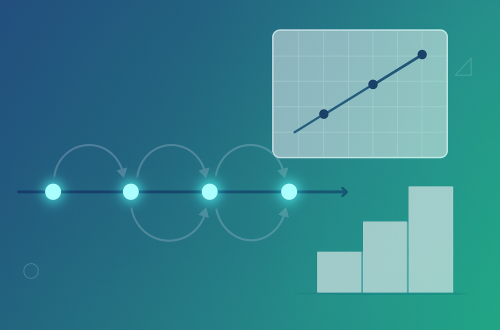For many students, mathematics becomes an endless sequence of memorized formulas — a catalog of rules to apply rather than ideas to understand. The quadratic formula, trigonometric identities, or the formula for the volume of a prism often appear as mysterious gifts from a textbook: elegant, useful, but detached from intuition. Yet behind every formula lies a story — a logical progression of reasoning built from first principles.
To derive a formula is to understand it. Derivation forces us to retrace the path of discovery, to rebuild relationships between quantities rather than rely on rote recall. When students engage in derivation, they cultivate mathematical literacy — the ability to see how different areas of math connect, and how logic transforms abstract thinking into practical tools.
This essay explores the value of deriving mathematical formulas from first principles. It discusses how derivation deepens conceptual understanding, provides step-by-step examples of how familiar formulas emerge, and demonstrates how visualization, logic, and creativity converge in mathematical thinking.
Why Derivation Matters: From Application to Comprehension
The Pitfalls of Memorization
Memorizing formulas can be efficient for passing exams, but it rarely builds long-term mastery. When a student learns that Area = base × height / 2 for a triangle without understanding why, that knowledge becomes fragile — easily forgotten or misapplied when the problem looks different.
For instance, many students can recall the quadratic formula
but cannot explain where it comes from. They apply it mechanically, not conceptually. However, once they see that it arises naturally from completing the square — a geometric method from algebraic reasoning — the formula stops being arbitrary. It becomes inevitable.
Cognitive Benefits of Derivation
Deriving a formula activates analytical reasoning and pattern recognition. It trains students to move step-by-step, validating each assumption. According to cognitive studies, the generation effect — producing knowledge rather than merely consuming it — significantly enhances retention. In other words, what we derive, we remember.
Moreover, derivation reveals the interconnectedness of mathematics. Geometry informs algebra; calculus explains geometry; trigonometry bridges both. Through derivation, learners experience mathematics not as fragmented topics but as one coherent structure built on logical foundations.
Derivation as Mathematical Dialogue
When we derive a formula, we engage in dialogue with mathematicians of the past. The act mirrors the historical process of discovery — how early thinkers like Euclid, Newton, or Euler reasoned from observation to generalization. Derivation transforms math from static knowledge into a dynamic conversation: each step retraces the logic that first revealed universal truths.
Rebuilding Familiar Formulas: Three Examples from First Principles
Let us explore three well-known formulas and their derivations. These examples demonstrate how mathematical reasoning transforms patterns into principles.
1. Deriving the Quadratic Formula
The quadratic formula is one of the most recognizable results in algebra. Yet its derivation, based on completing the square, reveals the geometric intuition behind solving equations of the form
Step 1: Normalize the equation.
Divide both sides by a (assuming a ≠ 0):
Step 2: Isolate the constant.
Step 3: Complete the square.
Add
to both sides to make the left-hand side a perfect square trinomial:
Now we can rewrite the left-hand side as a square:
Step 4: Take square roots and solve for x.
Subtract
from both sides:
Through derivation, the “mystery” formula reveals itself as a logical sequence. Each step follows naturally, and the structure of the discriminant (
) gains meaning — it represents whether the quadratic has real or complex roots.
2. Deriving the Sine and Cosine Addition Formulas
Trigonometric identities often feel arbitrary until we derive them geometrically or algebraically. Consider the identity:
Step 1: Use the unit circle.
Represent points
and
on the unit circle corresponding to angles
and
. Using Cartesian coordinates:
Step 2: Rotate the coordinate system by angle B.
When rotating a point by an angle B, new coordinates are given by:
Apply this to point
, treating the rotation as adding B to A:
Thus,
The derivation shows that these identities are not arbitrary memorized rules — they emerge from geometric rotation. The formulas encapsulate how rotating vectors combines directions and magnitudes in space.
3. Deriving the Volume of a Prism
The volume formula for any prism —
(base area × height) — is another example of simplicity grounded in logic.
Step 1: Define the base and the cross-section.
A prism is a solid with uniform cross-sectional area along its height. Imagine slicing the prism perpendicular to its height h. Every slice is identical in shape and area to the base B.
Step 2: Build the prism through integration (conceptually).
If we think of stacking infinitely thin slices of area B and infinitesimal thickness dh, the total volume is:
This integral expresses the volume as the accumulation of constant cross-sections.
Step 3: Connect to real-world intuition.
In rectangular prisms (boxes), this corresponds to multiplying length × width × height. For cylinders, the base is a circle, so
. Thus, the “formula” for volume generalizes from a principle of additive geometry, not from memorization.
The Pedagogy of Derivation: Teaching Students to Think Like Mathematicians
Learning Through Reconstruction
When teachers guide students through derivations, they shift the classroom dynamic from passive learning to active inquiry. Derivation turns math into a process of discovery rather than consumption. For instance, asking students to reconstruct the Pythagorean theorem using geometric reasoning or coordinate proofs strengthens both visual and logical reasoning.
This method builds metacognitive awareness — students become conscious of how they think, not just what they know. It develops intellectual independence, encouraging learners to validate and question mathematical claims instead of accepting them on authority.
Integrating Visual and Algebraic Reasoning
Visual tools such as dynamic geometry software (e.g., GeoGebra) or 3D modeling help students see how formulas behave. For example:
-
Showing how the area under a curve becomes a summation (integral).
-
Demonstrating trigonometric addition formulas with rotating vectors.
-
Using color-coded steps in algebraic derivations to reinforce logic.
Combining visualization and algebraic manipulation bridges intuition and abstraction, helping students internalize relationships among variables.
Encouraging Error Analysis
Derivation also fosters humility and persistence. Unlike memorization, where answers are binary, derivation invites mistakes. An incorrect assumption or skipped algebraic step exposes reasoning gaps — valuable opportunities for learning. Encouraging students to analyze why an error occurred cultivates resilience and deeper understanding.
Real-World Applications
Engineers, economists, and scientists routinely derive relationships to adapt formulas to new conditions. Understanding derivation allows them to modify models instead of relying blindly on memorized equations. For instance, in physics, deriving motion equations from Newton’s laws enables adaptation to non-uniform acceleration. In finance, deriving compound interest formulas clarifies how time and rate interact.
Table: Examples of Common Formulas and Their First-Principles Derivations
| Formula | Area of Use | Derivation Principle | Key Insight |
|---|---|---|---|
| Quadratic Formula
|
Algebra | Completing the square | Shows structure of roots and discriminant |
| Sine Addition
|
Trigonometry | Rotation in unit circle | Connects geometry and algebraic identities |
| Volume of Prism
|
Geometry | Integration of cross-sections | Generalizes to all uniform solids |
| Pythagorean Theorem
|
Geometry | Similar triangles / area decomposition | Reveals relation between linear and area measures |
| Compound Interest
|
Finance | Repeated percentage growth | Translates arithmetic progression into exponential growth |
This table summarizes how seemingly unrelated formulas share a unifying structure: each arises from reasoning about relationships, not rote memorization.
Conclusion: Rediscovering Mathematics as a Living Logic
Mathematical derivation is not merely an academic exercise — it is an act of intellectual empowerment. When we derive, we reconstruct knowledge rather than inherit it. The process demystifies formulas, transforming them from static symbols into living ideas.
Understanding through derivation builds confidence and curiosity. It replaces mechanical recall with comprehension, allowing students to extend concepts to new contexts — the hallmark of true mathematical thinking.
In a world where calculators and software can compute instantly, human understanding becomes the true value of mathematics. Derivation keeps that understanding alive. It reminds us that every formula is not an end, but a beginning — a doorway back to the reasoning that made it possible.

